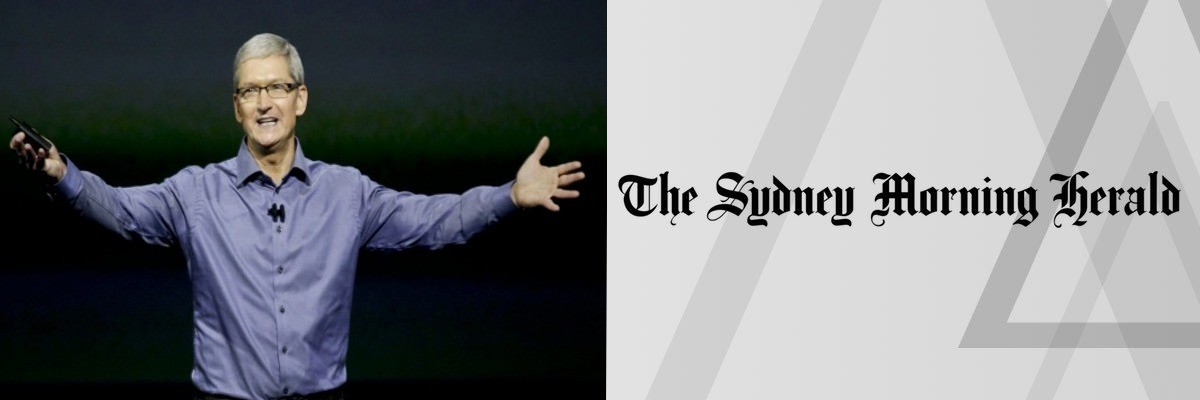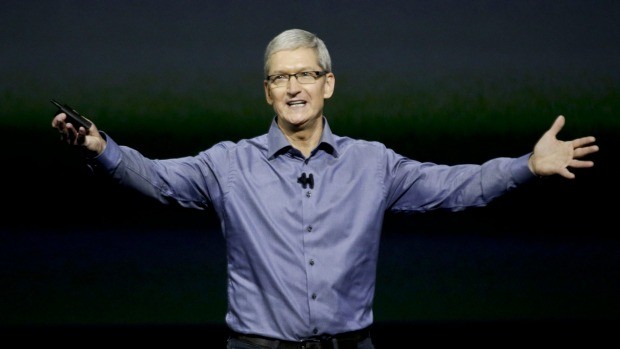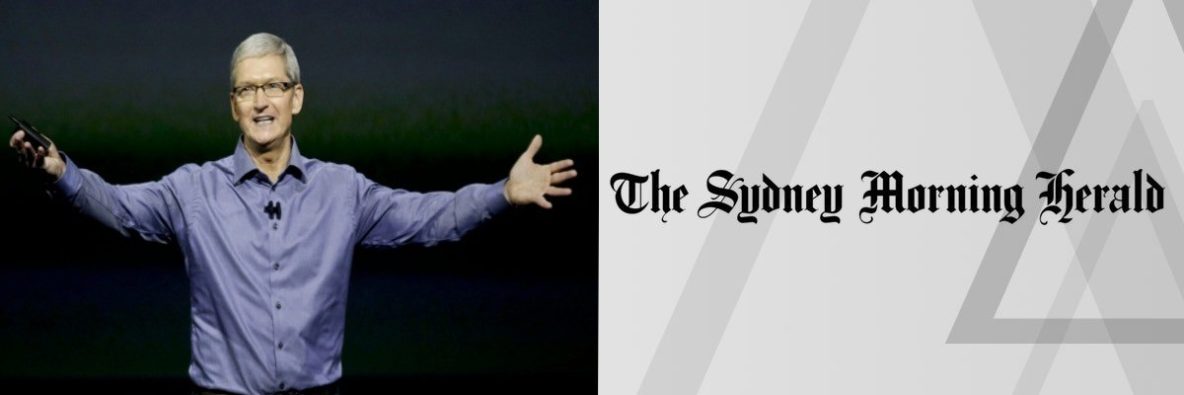
Written by Alex Pollak. Originally published on The Sydney Morning Herald, September 24 2015.

Can Apple chief Tim Cook to keep releasing great products?.
Everybody thinks that Apple is a hardware company, and it is… in part. But this is simplistic analysis, and doesn’t really bring into play the way the company has evolved into an eco-system – one which increasingly will command a higher share price multiple.
But first, let’s look at how a hardware company can lose its way. HTC, a high-end smartphone maker pretty much as good as Apple or Samsung (and the first ever Android phone) was dropped from the Taiwanese stock market’s TWSE 50 Wednesday. It is now valued at less than the amount of cash it has on its balance sheet, meaning investors are now betting on how much more money the company will lose before it is shut down or bought.
Falling out of the top 50 is bad. It makes the company much less attractive to institutional investors, many of which use the index as the basis for their investable universe.
The trouble with investing in hardware companies (which is what Apple looks like, but is more than) is that the hardware can be superceded easily even with minor tweaks.
Promiscuous consumers
People are promiscuous about gear – they often buy a given brand only once or twice. You may have bought a Dell one year and a Sony the next.
In phones, the brand du jour was Nokia (because it was small) and then Blackberry (which had email). But then the next thing came along – the end result was pretty much terminal for those companies as serious players in those markets.
In the personal computers example, whatever you bought came with a Microsoft Windows operating system. So while the hardware companies are struggling, the maker of the operating system, Microsoft, is still worth US$340 billion ($480 billion) and has a share price multiple which, depending on how you carve it, is approaching 20 times its estimated earnings per share.
So is a 12 times multiple too expensive for Apple in the context of a companies like HTC and Blackberry, both of which have run into serious trouble selling very high quality hardware?
The bull case turns on reliability of earnings. There are 800 million iTunes accounts globally, meaning that there are 800 million people (at least) who are buying things – hardware, music, movies, games, applications – almost all on an Apple operating system.
In fact, that community of devices is now so large that it really constitutes an eco-system. And because all the devices operate on the same system, they all talk to another – watches, routers, base stations, phones, ipads, streaming tv devices and soon cars. (For the record, on Apple’s projected revenue of around US$200 billon this year every iTunes account holder will on average spend US$250).
From Apple’s perspective, all the company has to do to maintain its multiple is continue to make great products which are just a fraction ahead of the curve, so keeping people in the system and buying all the things that it has to sell.
Staying ahead of the curve
That might sound easy, but it isn’t. Any time an Apple product doesn’t work well, the company leaves itself vulnerable on that product to a competitor. If the tablet didn’t work, that would open the way for a user to experiment with the Android version. And when using an Android tablet, given the time invested to learn that system, wouldn’t it make sense to pair it with an Android phone?
And if that worked, it might be followed by a Fitbit, a Galaxy tablet and a Chromecast TV stick. All Android compatible. Most people don’t want to learn a new operating system but if they have no choice, they will.
Which is why the investment community focuses so hard on the kind of event Apple had on Wednesday – they are looking for the one mis-step, in the expectation that this will be the beginning of the end.
I suspect that Apple has a way to run yet. But there are disruptive elements on the horizon. The virtual reality business within Microsoft is a case in point. The hardware (which won’t only be Microsoft – Facebook is active through Occulus Rift) will almost certainly involve multiple patent payments to a broad range of suppliers. But the applications of virtual reality – the apps, if you will – are the disruptive part. Like surgery training, driver education, gaming, shopping, visiting art galleries, the list goes on and on (part of which is here).
One of the hard bits of investment is picking how business models work, including how new disruptive models will play into the existing framework.
Historically, such incursions generally result in a falling share price multiple for the old model. But what is even more highly prized, but harder to understand are the stratospheric multiples that the disruptors can trade on, and then grow into.
Share this Post


